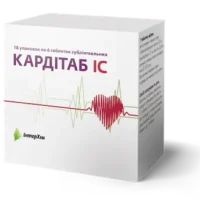Description
Parkizol (pramipexole dihydrochloride) Tablets 0.25 mg. №30
Ingredients
- Active ingredient: Pramipexole dihydrochloride
- Other ingredients: lactose monohydrate, maize starch, colloidal anhydrous silica, magnesium stearate
Dosage
Recommended dosage: The usual starting dose is 0.125 mg taken once daily 2-3 hours before bedtime. The dose may be gradually increased every 5-7 days.
Indications
Parkizol tablets are indicated for the treatment of Parkinson’s disease and restless legs syndrome (RLS).
Contraindications
Do not use Parkizol tablets if you are allergic to pramipexole or any other ingredients in the formulation. It is contraindicated in patients with severe renal impairment.
Directions
Take Parkizol tablets orally with or without food. Swallow the tablets whole with a glass of water. Do not crush, chew, or break the tablets.
Scientific Evidence
Pramipexole, the active ingredient in Parkizol tablets, is a dopamine agonist that works by stimulating dopamine receptors in the brain. Studies have shown that pramipexole is effective in improving motor symptoms in patients with Parkinson’s disease and reducing symptoms of restless legs syndrome.
Additional Information
- Pharmacological Effects: Pramipexole acts as an agonist at dopamine D2, D3, and D4 receptors, leading to improved motor function in Parkinson’s disease. It also helps alleviate symptoms of restless legs syndrome by modulating dopamine levels in the brain.
- Clinical Trials: Clinical trials have demonstrated the efficacy of pramipexole in improving motor symptoms and quality of life in patients with Parkinson’s disease. A study published in the Journal of Neurology showed that pramipexole was well-tolerated and significantly reduced symptoms of restless legs syndrome compared to a placebo.





